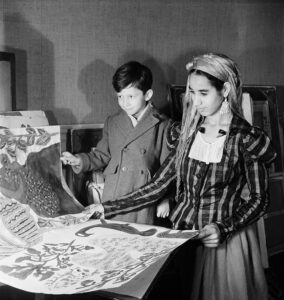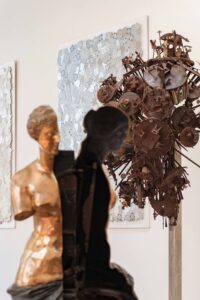
Spoon Woman
She was the first monumental sculpture in Giacometti’s work, presented face on, with no arms or legs, on a pedestal. She is an inaccessible, vertical figure, the hieratism heralding the Standing Women, and yet a symbol of fertility from the concave shape of her stomach receptacle.
The bronze version, cast in 1954 by the Susse foundry, is twenty centimetres bigger than the original plaster one exhibited at the Salon des Tuileries in 1927 with the title Sculpture.
Alberto Giacometti made this sculpture having been influenced by his visit of the African and Oceanian Art exhibition held at the Musée des arts décoratifs de Paris during the winter of 1923-1924.
“Spoon Woman curves on its sole foot, a large curving concave stomach-womb, under a small bust, dominated by an eye in the minuscule head”. (Marcelin Pleynet, in cat. Musée d’Art et d’Industrie, Saint-Etienne, summer 1981.)
Alberto Giacometti (1901 - 1966)
Aimé Maeght was his art dealer. The artist’s first exhibition was presented at the Galerie Maeght in Paris in 1951. Working with Aimé and Marguerite Maeght, Alberto Giacometti would donate exceptional works, from the first works with surrealist influence until works at the end of his life in the 60s. The Foundation possesses the largest collection of the artist in Europe, with the Zurich Kunsthaus and the Fondation Giacometti in Paris.



